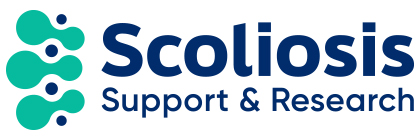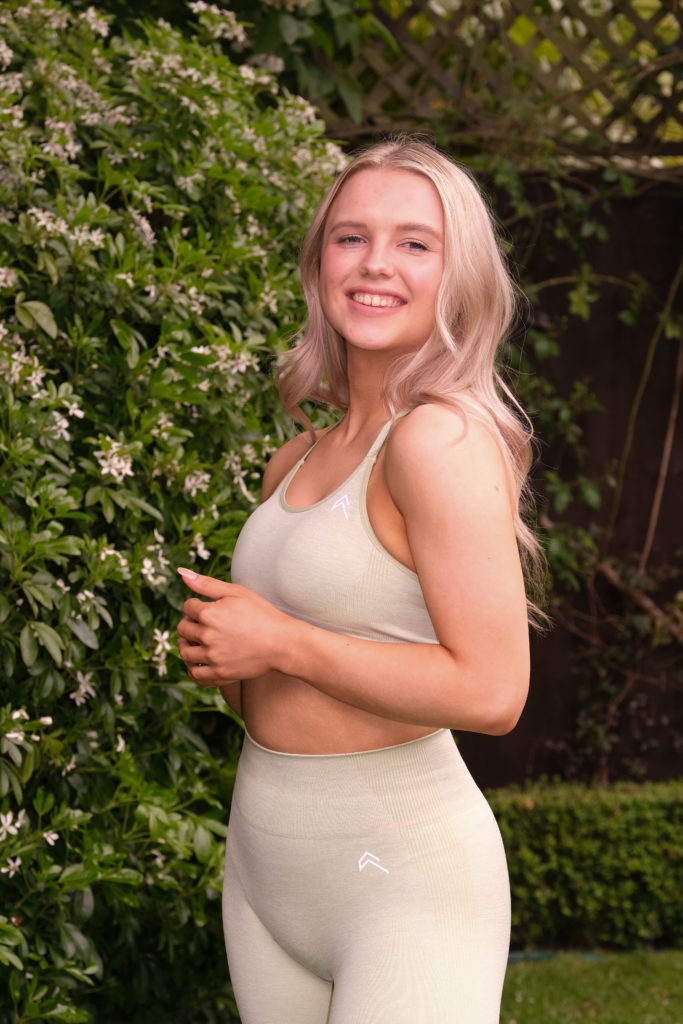Monday – Friday 9am to 5pm
Emily Hale
Emily Hale was diagnosed with scoliosis at age 14 with a 54 degree curve and went on to have fusion surgery a year later. Emily was a dancer and figure skater before the surgery so was keen to get back into the activities she loved. She found it harder than expected though and it shook her confidence to realise what she could do had changed. Emily tried to find other ways of being physical and to build strength in recovery and that’s how she found Pilates. Emily now works full time as a Pilates instructor.
‘Figure skating has been hard. I haven’t been able to do that in the same way. You need to have some level of back extension to lift your legs on the ice. The first time I got my skates back on and got on the ice, it was heartbreaking, because I couldn’t do it anymore. I think that had a really big impact on my recovery and made me more hesitant to throw myself into things because I thought, I’m not the same as I was before and I can’t do the things I did before,’ said Emily.
Emily’s surgeon had recommended Pilates as a way to build core strength and she found it had the flavour of dance and really took to it. She came out of her bad experience with figure skating and thought about what she could do, rather than what she couldn’t.
‘I’ve done some really cool things, even after fusion. I did get back to dance training and did dance competitions. I trained as a surf instructor in Australia, went on a trip to Ethiopia and climbed mountains. I proved there were things I could do. I was hesitant and heartbroken but I turned it around. Pilates was the constant throughout,’ said Emily.
It was while Emily was working at a desk job that everything went sour.
‘I was sat up for 8 hours a day, plus the commute, it was just awful. I used Pilates to help with that, which led to me qualifying to be a Pilates instructor and work on that full time. I just wanted to learn more about my body by doing the Pilates training course at first. A lot of Pilates classes get you scrunched up in positions that I couldn’t do, and it was so frustrating. I needed to work out how my body worked and find movements that worked for me,’ said Emily.
Emily is a big part of the scoliosis community on Instagram, sharing her experience woth scoliosis and her tips and tricks for managing it.
‘It was at the start of lockdown that I found all these support groups and pages on Instagram about people’s scoliosis journeys and fusion. I was really taken a back, I thought ‘oh wow, we’re allowed to speak about it?!’ My closest friends now are people I connected with through Instagram about this shared experience. That connects you in such a deep way, you can try to explain your fusion to someone else but they can never quite get it unless they’ve been through it. It’s been amazing speaking with people in the same boat.
Being part of the community has highlighted things within myself that I didn’t think was connected to scoliosis, but I’ve now seen that reflected in dozens of others, one of those being stress and back pain. My back would be a nightmare whenever I was stressed at work. A lot of people have that pattern though and I now see that when I reduce my stress, I reduce my back pain. That’s been a game changer for me, working to balance my life better to mitigate my back pain as much as possible. That’s a real benefit of the community, knowing you’re not alone with the symptoms you’re having,’ said Emily.
Emily wants others with scoliosis to see the strength in what your body has gone through, especially post-fusion.
‘What I see a lot of is a lot of hesitancy post-op but you can do a lot more than you think after your recovery, you don’t need to be wrapped in bubble wrap. To build that confidence, people have to start small and work your way up. For me, body confidence means more than just how I look. It’s knowing that your body still is strong, and you still have a huge amount of things you can do, with scoliosis or post-fusion,’ said Emily.
If you would like to talk further about any aspect of scoliosis, SAUK is here to help; please call our helpline or contact us via post or using our e-mail address info@sauk.org.uk.
© 2024 Scoliosis Support & Research | Scoliosis Support & Research is a registered charity no. 1181463
Website design & development by Pedalo

